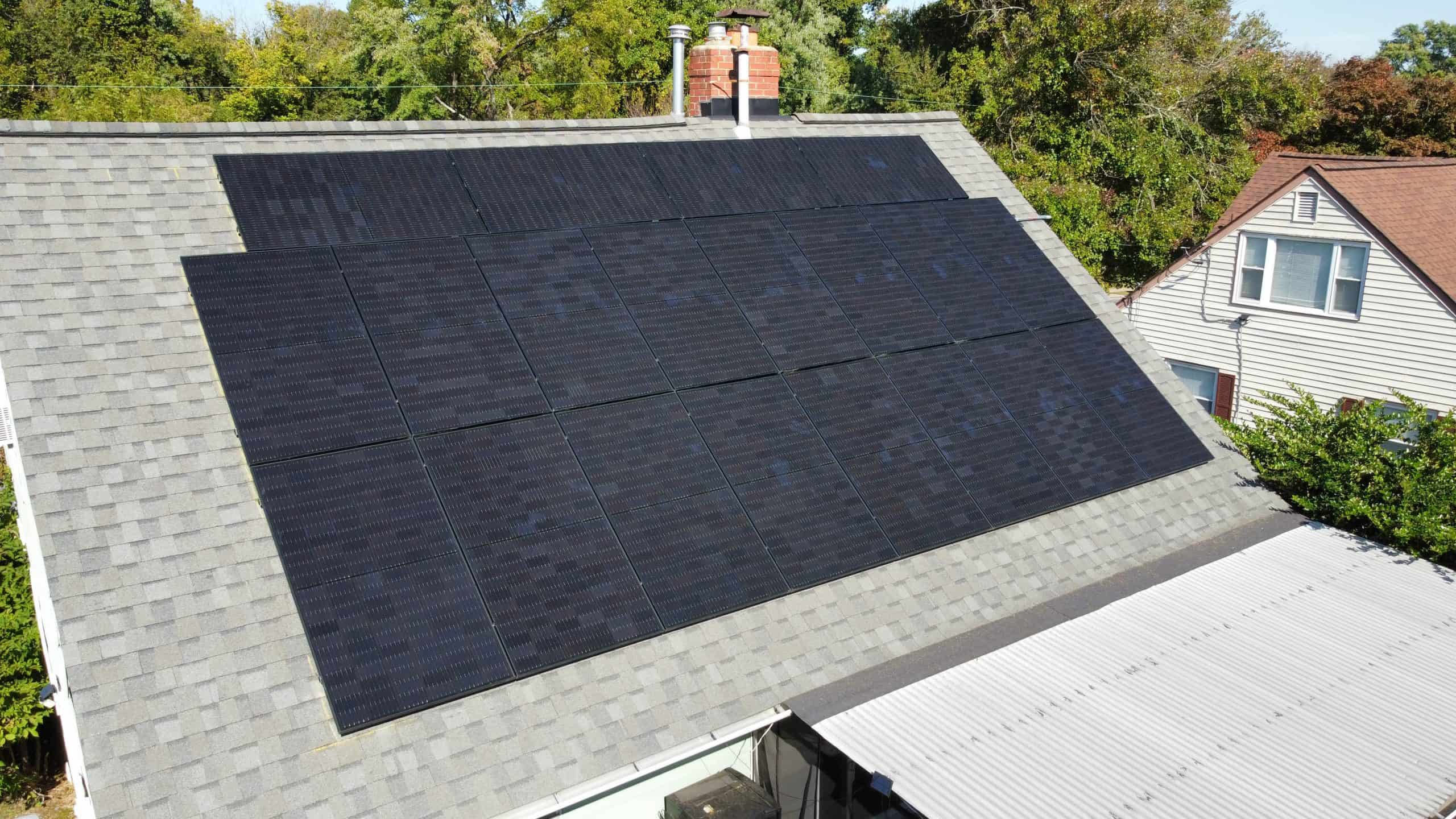Article
How Solar Panels Are Made

Harnessing the sun’s energy to power our homes not only illuminates our living spaces but also lights the way to a more sustainable future. Silent and steadfast, solar panels capture the essence of the sun’s power, transforming rooftops into sources of clean, renewable energy.
The creation of these solar marvels, from the silicon extracted from sand to the sophisticated cells that generate electricity, is a testament to human ingenuity and our commitment to the planet.
Join us as we unveil the intricate process behind solar panels, revealing the materials, craftsmanship, and technology that make turning sunlight into electricity possible for homes around the globe.
The Path from Sand to Solar Panel
Before delving into the meticulous journey of silicon, the backbone of solar panels, it’s fascinating to consider the global landscape of solar manufacturing and the basic steps that transform raw materials into the solar panels adorning our rooftops.
The process of creating a solar panel can be summarized in a series of key steps, each critical to the panel’s efficiency and durability:
- Purifying Silicon: The journey begins with extracting and purifying silicon from quartz sand, a process that transforms this abundant material into a highly pure form.
- Creating Ingots and Wafers: The purified silicon is melted and formed into cylindrical ingots. These ingots are then sliced into thin wafers, the foundation of solar cells.
- Producing Solar Cells: The silicon wafers undergo further processing, including doping and adding anti-reflective coatings, to enhance their ability to convert sunlight into electricity.
- Assembling the Panel: Individual solar cells are connected and sealed within a protective frame and glass to form a solar panel.
- Testing and Quality Assurance: Before making their way to rooftops, solar panels are rigorously tested to ensure they meet strict performance and durability standards.
Understanding these steps provides a framework for appreciating the intricate details involved in each phase of production. With this background, let’s explore the fascinating journey of silicon in solar panels, a journey that exemplifies the remarkable blend of nature and technology in the pursuit of sustainable energy.
The Journey of Silicon in Solar Panels
Silicon, the second most abundant element in the Earth’s crust, serves as the foundation for most solar cells. This journey begins with mining and purifying silicon, but not just any silicon—the industry requires a very pure form to effectively convert sunlight into electricity.
To achieve the purity needed, silicon undergoes a rigorous refinement process. It starts with quartz sand being heated to high temperatures in a furnace, where it reacts with carbon to form silicon metal. This silicon is then further purified through various chemical processes, resulting in polysilicon, a material that is suitable for solar panels.
The Making of Silicon Wafers
Transforming polysilicon into silicon wafers marks a pivotal step in solar panel production, marrying meticulous engineering with advanced chemistry. These wafers are the foundational elements of solar cells, where sunlight is converted into electricity.
From Polysilicon to Silicon Ingots
Starting with high-purity polysilicon, the material is melted and then crystallized into cylindrical ingots using the Czochralski process. This involves heating the polysilicon beyond 1,400°C, then slowly pulling and rotating a seed crystal to form the ingot. The growth is carefully controlled to ensure the crystal forms correctly, minimizing defects over several days.
Crafting Silicon Wafers
The solidified ingots are then sawed into thin wafers using a diamond-coated wire saw, a step requiring precision to ensure uniform thickness and minimize defects. Following slicing, the wafers are polished to a smooth finish, preparing them for the next stages of solar cell production. This process balances the removal of surface imperfections with the maintenance of wafer thickness, ensuring optimal light absorption and electrical efficiency in the final solar cell.
This streamlined journey from polysilicon to silicon wafers highlights the blend of precision and ingenuity needed to create the core of solar cells.
Developing Efficient Solar Cells
The true potential of a silicon wafer is unlocked through careful engineering, turning it into a powerhouse of electricity generation.
- The Process of Charge Addition and Coating: By doping the silicon with tiny amounts of other elements, manufacturers create a positive/negative (p/n) junction in the wafer. This junction is crucial for converting sunlight into electricity.
- Incorporating Silver Conductors: The addition of silver conductors to the wafer’s surface creates pathways for electrons, facilitating the flow of electric current.
These steps transform the silicon wafer into an efficient solar cell, capable of harnessing the sun’s power with remarkable efficiency. Through doping and the addition of conductive pathways, the solar cell is optimized to capture light and convert it into usable electricity.
This meticulous process of developing each cell is a testament to the sophistication behind solar technology, highlighting the intricate balance of physics and engineering required to power our homes and communities with the sun’s energy.
Assembling Solar Panels
The journey from silicon to solar cells culminates in the assembly of individual cells into panels, primed to capture and convert the sun’s energy efficiently.
- Connecting Solar Cells and Protective Measures: Solar cells are meticulously linked and encased in glass to shield them from environmental elements. This crucial step not only protects the cells but also ensures the panel’s longevity through a robust framing process.
- Insights on Panel Assembly and Testing: To guarantee performance and reliability, each assembled panel is subjected to comprehensive testing. These tests assess the panel’s efficiency, durability, and safety, ensuring that homeowners are equipped with solar products they can trust.
The assembly of solar panels represents a critical phase where precision and quality assurance converge to create a product ready for the market. This stage ensures that the innovative work carried out in developing efficient solar cells translates into tangible benefits for homeowners.
By meticulously connecting, protecting, and testing each panel, manufacturers deliver solar solutions that promise not only to reduce energy costs but also to support a sustainable future.
Final Production Steps of Solar Panels
The culmination of solar panel production involves intricate final touches that are crucial for the panel’s functionality and longevity. One of the key components added at this stage is the junction box, an essential element for establishing secure electrical connections. This box is meticulously attached to the back of the panel, ensuring that the electricity generated by the solar cells can be safely and efficiently directed to a home’s power system or the grid.
Additionally, cables and connectors are fitted to facilitate easy installation and integration with existing electrical infrastructure, highlighting the attention to detail that goes into making solar panels user-friendly and adaptable.
Following the hardware assembly, the solar panels undergo rigorous quality control checks. These checks are designed to verify the panels’ performance under various conditions and ensure they meet stringent safety standards. Inspectors scrutinize every aspect of the panel, from the efficiency of energy conversion to the durability of materials used in construction.
This thorough evaluation process guarantees that the solar panels are not only safe and ready for immediate installation but also built to withstand environmental challenges over many years. By the time a solar panel reaches the consumer, it has been tested to assure optimal performance and resilience.
How to Evaluate Solar Panel Quality for Homes
When selecting solar panels for your home, consider these key factors:
- Efficiency: Vital for maximizing electricity production, especially in limited spaces. High-efficiency panels are perfect for smaller rooftops, converting sunlight to electricity more effectively.
- Power Rating: Measured in watts, it indicates the panel’s electricity output under ideal conditions. A higher power rating means more electricity generation.
- Warranties: Offer insights into the panel’s durability and manufacturer confidence. They protect your investment by covering defects and efficiency losses over time.
- Performance Guarantees: Ensure the panel maintains a specified efficiency level for a certain period, typically 25 years, safeguarding your panel’s productivity.
Choosing the right solar panel can be a complex decision, balancing efficiency, power, and the assurance of warranties and guarantees. With so many factors to consider, finding the perfect solar solution for your home might seem daunting. However, you don’t have to navigate this journey alone. Our solar experts are ready to help, offering personalized advice to ensure you select the correct solar panels that meet your home’s energy requirements. Solar Energy World customers also benefit from our Triple-Platinum Solar Warranty, which provides various guarantees to give you peace of mind when going solar. Contact us today to learn more about how we can assist you in making an informed decision for a brighter, more sustainable future.
Embracing Solar Power for Sustainable Living
Solar energy is more than just technology; it’s a pathway to sustainable living. By harnessing the sun’s power, homeowners can reduce their carbon footprint, save on energy bills, and participate in the global movement towards a greener future. The process of making solar panels, from silicon to the final product, is a testament to human ingenuity and our commitment to preserving the planet.
By understanding how solar panels are made, you are taking the first step towards embracing solar power. The journey from silicon to electricity is not just about generating power; it’s about empowering individuals and communities to live sustainably. As we continue to innovate and refine solar technologies, the dream of a solar-powered world becomes increasingly tangible. Join us in this journey toward a brighter, cleaner future.
Want a Free Solar Estimate?
Fill out the form to get started today.


